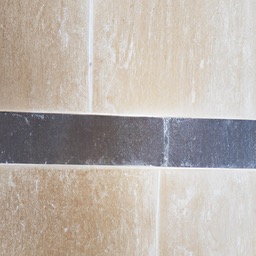Floors are often the unsung heroes of our living spaces, enduring daily foot traffic and spills while silently supporting our activities. However, over time, even the most resilient floors can lose their luster, accumulating grime, scratches, and scuff marks. This is where the transformative power of stripping and waxing comes into play. In this comprehensive guide, we will delve into the step-by-step process of stripping and waxing floors, equipping you with the knowledge to rejuvenate your floors and breathe new life into your space.
Assessing the Condition of Your Floors
Before diving into the stripping and waxing process, it’s essential to assess the condition of your floors. Determine the type of flooring material you have, whether it’s vinyl, linoleum, hardwood, or another type, as different materials may require specific treatment methods. Inspect the floor for any deep scratches, stains, or areas of heavy wear, as these may require extra attention during the restoration process.
Gathering the Necessary Supplies
To effectively strip and wax your floors, you’ll need the following supplies:
- Floor stripper
- Wax remover
- Bucket
- Mop
- Scrub brush or floor scrubber
- Wet vacuum or mop
- Floor wax
- Floor wax applicator or mop
- Buffing machine (optional)
Ensure that you have all the necessary supplies on hand before beginning the process to avoid interruptions.
Preparing the Area
Prepare the area by removing any furniture, rugs, or obstacles from the floor. This will allow for unobstructed access and ensure thorough cleaning and waxing. Additionally, ensure adequate ventilation in the area to prevent the buildup of fumes from the stripping and waxing products.
Stripping the Floor
Start by diluting the floor stripper according to the manufacturer’s instructions. Apply the stripper to a small section of the floor using a mop or applicator, ensuring even coverage. Allow the stripper to sit for the recommended dwell time, typically 10-15 minutes, to penetrate and loosen the old wax and grime.
Next, agitate the stripper using a scrub brush or floor scrubber to help lift stubborn dirt and wax buildup. Work in small sections, overlapping each area slightly to ensure thorough coverage. Once the wax has been loosened, use a wet vacuum or mop to remove the stripper and dissolved wax from the floor.
Removing Residual Wax
After stripping the floor, there may still be traces of residual wax or stubborn stains remaining. In such cases, apply a wax remover or degreaser to the affected areas and allow it to sit for a few minutes. Then, scrub the area using a scrub brush or floor scrubber to lift away the remaining wax and stains. Rinse the floor thoroughly with clean water to remove any traces of the remover.
Waxing the Floor
Once the floor is clean and free of old wax, it’s time to apply a fresh coat of wax to protect and beautify the surface. Choose a high-quality floor wax suited to your specific flooring material and desired finish. Pour a small amount of wax onto the floor and spread it evenly using a floor wax applicator or mop, working in small sections to ensure uniform coverage.
Allow the first coat of wax to dry completely, typically 30-60 minutes, before applying additional coats as needed to achieve the desired level of shine and protection. For optimal results, follow the manufacturer’s recommendations regarding the number of coats and drying times between applications.
Buffing the Floor (Optional)
For an extra layer of polish and shine, consider buffing the floor once the wax has dried completely. Using a buffing machine fitted with a soft pad, gently buff the floor in circular motions to bring out the natural luster of the wax and create a smooth, glossy finish.
Conclusion
To strip and wax floors is a labor-intensive process, but the results are well worth the effort. By following the step-by-step guide outlined above, you can transform dull, worn-out floors into gleaming, like-new surfaces that enhance the beauty and functionality of your space. Whether you’re tackling a residential or commercial project, proper floor maintenance is key to prolonging the lifespan of your floors and keeping them looking their best for years to come. So roll up your sleeves, gather your supplies, and embark on the journey to floor restoration – your space will thank you for it!


